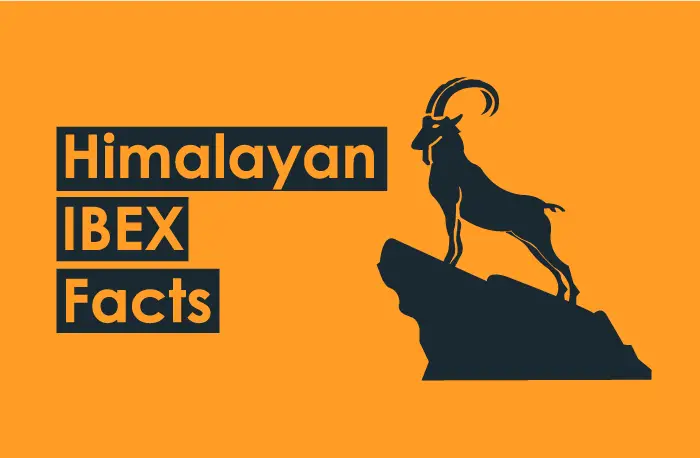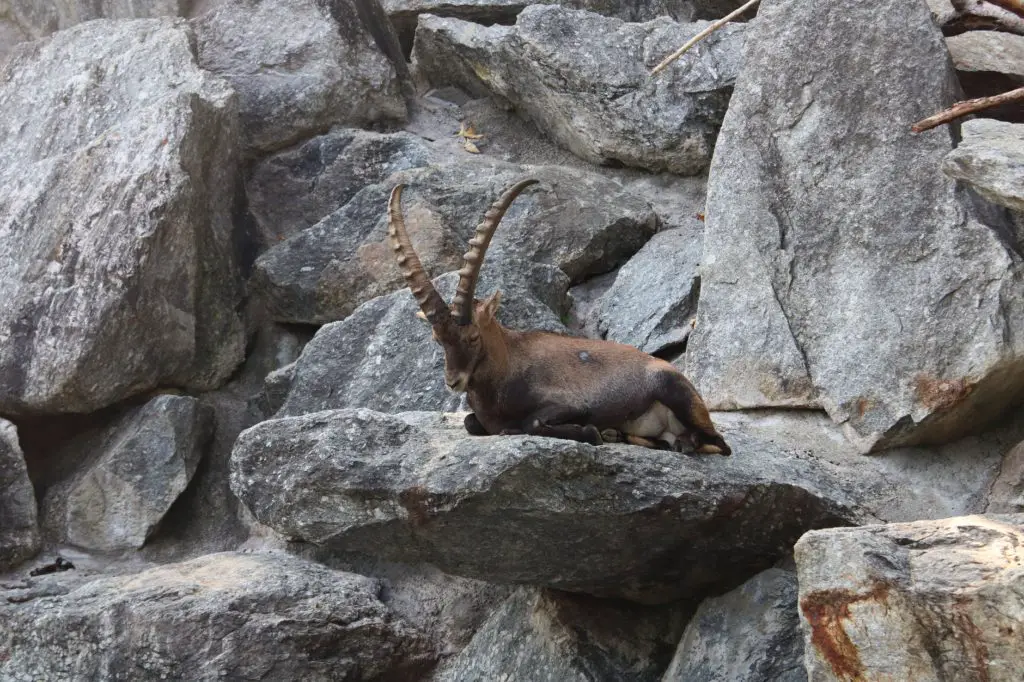
Himalayan Ibex Facts, Fully Loaded Beauty
Himalayan ibex (Capra Ibex Sibirica) is a subspecies of the Siberian ibex. It is mainly found in the rocky and arid mountains of Hindukush, Karakoram, and the Himalayas of Gilgit-Baltistan. The males have large horns, long bears, heavy body while females have small horns and a small body.
Scientific name: Capra Ibex Sibirica
Kingdom: Animalia
Species: C. sibirica
Threats: Human disturbance, illegal hunting, habitat loss
Weight: 90kg
Himalayan ibex fur is woolly and well dense, with a predominant brown color range. Moreover, they have large antlers and are in danger of extinction. Compared to other species of ibex, the Himalayan ibex is shorter and stockier.
also check: Liger Facts
Himalayan Ibex Facts Summary

- The Himalayan ibex male can easily distinguish from other caprids, by his characteristics beard, and horns.
- The female ibex are grey-brown in color, with a dark marking on legs, and a thin horn. Both genders have short black furry tails and dark dorsal stripe down the length of their back.
- They particularly stay at a fair height using windblown ridges and in winter do not migrate to lower heights.
- The ibex is distributed in the Karakoram, Hindukush, and Himalayas of Gilgit-Baltistan, Greater Himalayas and Pir Panjals of Jammu & Kashmir and Himachal Pradesh.
- The habitat of ibex is a Steep ridge above the tree line in the Himalayas. Sometimes enters forests. Feeds on alpine pastures and wet meadows but always close to rocky steep land.
- Its local name is Tangrol.
- Moreover, ibex helps to maintain a healthy ecosystem.
- The survival of ibex is not so threatened, because of the inaccessibility of its habitat.
- Himalayan ibex face human disturbance, illegal hunting, competition for forage with domestic livestock, and habitat loss.
The researchers have revealed that the Himalayan Ibex is a distinct species from the Siberian Ibex.
Let’s have a brief talk about Siberian Ibex.
Siberian Ibex
The Siberian ibex (Capra Siberian), is a species of ibex that lives in Central Asia, and also known as the Altai ibex or Gobi ibex. It is a species of artiodactyls from the genus Mountain goats of the Bovid family, inhabiting the mountainous regions of Asia.
Females are much smaller than males, their horns are also much less developed, and their beards are much smaller
Appearance
The Siberian ibex is a rather large ungulate. Outwardly, he somewhat resembles a domestic goat, but more muscular, lean, and slender. A relatively short, powerful torso rests on strong, thick legs with blunt hooves. The head is relatively large with a cone-shaped elongated muzzle the neck is muscular.
In males, the horns reach an enormous size, are accurately elongated backward, and bear frequently located and strongly convex transverse ridges. The horns reach a length of 150 cm, in females; they are much smaller, up to 40 cm.
Habitat
The habitats are confined to the rocky areas of the mountains. The Siberian ibex is found in the following countries: the Russian Federation, Kazakhstan, China, Kyrgyzstan, Afghanistan, Mongolia, Tajikistan, Uzbekistan, India, and Pakistan.
Looking interesting. Let us now talk about its life style.
Lifestyle
The Siberian ibex is a relatively sedentary animal. In places where he is little disturbed, he makes only minor seasonal and, especially, daily movements. In autumn, goats gather in herds of up to 30 heads, which include both males and females of all ages.
At this time, they more often than at other times, graze on alpine meadows, sometimes spending whole days there. By winter, goats become very fat. Animals feed on herbaceous plants, shoots, leaves, needles of shrubs, and trees.
Threats
Compared to other mountain goat species, this species is common and not threatened. Uncontrolled hunting and poaching can become a potential hazard for Siberian ibex.
Conclusion:
Ibex is a very beautiful rare goat species but the fact is that it is going endangered. All goat categories are performing very well in the sense of population except some ibex species in which the Himalayan is the one. It is a very cute animal, in-fact all animals are very cute and loaded with innocence, we should care and love them in a natural way rather use to kill or prison them, that will be good for nature and the humanity in the long run.
You may also enjoy reading: